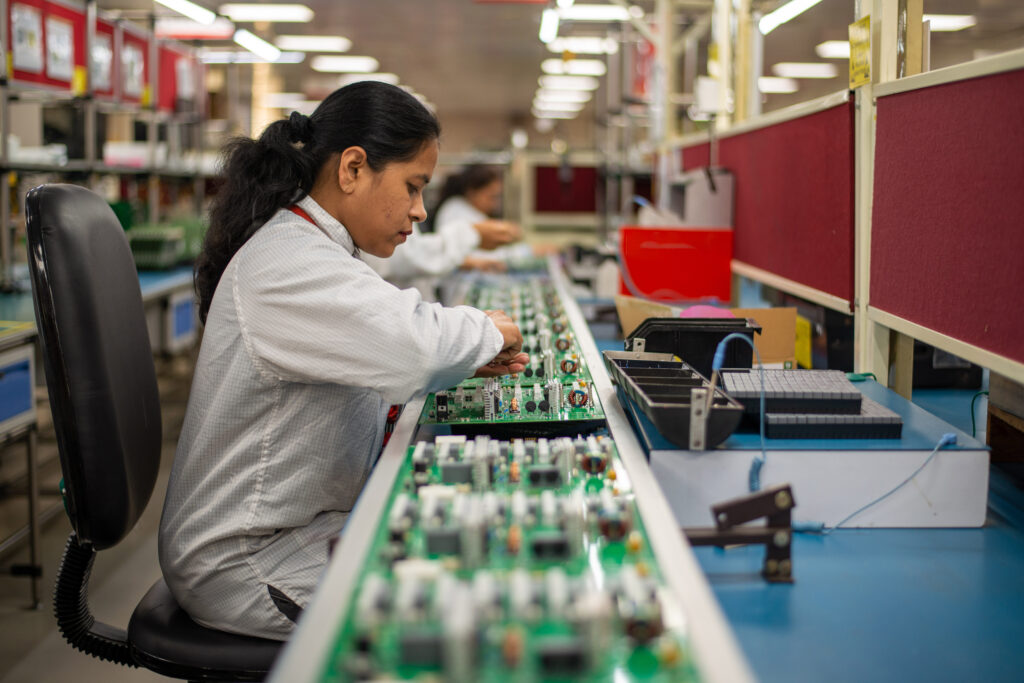India’s economy slowed to 5.4%, missing the RBI’s 7% forecast. This decline raises concerns about growth prospects.
Key Causes of the Slowdown
Multiple factors contributed to the slowdown. Consumer demand dropped, and private investment remained weak. Government spending, a vital growth driver, reduced significantly. India’s exports of goods continued to struggle, with a mere 2% global market share in 2023.
Fast-moving consumer goods (FMCG) companies experienced weak sales. Publicly traded firms’ wage bills, a key indicator of urban wages, also shrank. The RBI revised its growth forecast to 6.6% for 2024-2025. Economist Rajeshwari Sengupta highlighted serious demand issues following the GDP decline.
Finance Minister Nirmala Sitharaman offered an optimistic view. She blamed the dip on lower government spending during an election-focused quarter. She expects stronger growth in the third quarter to offset this slowdown. Despite weaker growth, India remains the fastest-growing major economy.
Some experts argue restrictive interest rates aimed at inflation control are hindering growth. Higher rates make borrowing expensive, reducing consumption and investment. Critics believe this approach stifles growth potential. The RBI has kept rates unchanged for two years to control inflation.
India’s inflation reached 6.2% in October, surpassing the RBI’s target ceiling. Rising food prices, especially vegetables, fueled inflation. Economists worry food inflation could drive up other prices, worsening core inflation.
However, interest rates alone may not explain the slowdown. Lower rates can only boost growth if demand exists. Himanshu, an economist at Jawaharlal Nehru University, stated that businesses won’t borrow or invest without strong demand.
Outgoing RBI governor Shaktikanta Das insists India’s growth story remains strong. He claims the balance between growth and inflation is well managed. Yet, urban demand shows signs of weakening, despite record-high retail credit and rising unsecured loans. Rural demand appears stronger, helped by a good monsoon and higher food prices.
Old vs New Economy Divergence
India’s economy follows a “two-speed trajectory.” The old economy includes agriculture, small industries, and the informal sector, which face long-delayed reforms. The new economy, driven by booming services exports, shows stronger performance.
Global Capability Centres (GCCs) play a key role in the new economy. India hosts over 50% of the world’s GCCs, generating $46 billion in revenue. GCCs support urban consumption, driving demand for luxury goods, real estate, and SUVs. However, the growth boost from GCCs is fading as these centers become established.
This dual-speed economy struggles with a lack of clear growth catalysts. Private investment is essential, but weak consumption prevents firms from investing. Without new jobs and higher incomes, consumption remains low. “It’s a vicious cycle,” says Sengupta.
India’s rising tariffs add to growth challenges. Average tariffs rose from 5% in 2013-14 to 17% today, higher than other Asian exporters. These higher tariffs raise production costs, hurting India’s competitiveness in global markets.
Economist Arvind Subramanian highlights another issue. While experts call for lower rates, the RBI is selling dollars to prop up the rupee. This action reduces market liquidity. Critics argue this policy makes exports costlier and less competitive globally.
Critics also believe India’s “fastest-growing economy” narrative delays necessary reforms. Economist Sengupta notes India’s per capita GDP is still under $3,000, far below the U.S. at $86,000. Sustained higher growth is essential to create jobs and raise incomes.
Boosting growth will not be easy. Without private investment, Himanshu suggests raising wages through government job schemes. Sengupta recommends cutting tariffs and attracting export investments shifting away from China.
The government remains positive. It points to strong banks, robust foreign reserves, and reduced poverty as key strengths. Chief Economic Adviser V. Anantha Nageswaran urges against overreacting to the GDP dip, stating India’s “growth story remains intact.”
Skepticism persists, though. Sengupta highlights India’s unfulfilled ambitions. “There’s no nation as ambitious for so long without taking adequate steps to fulfill that ambition,” she says. Many await the day when India’s “decade” truly arrives.
